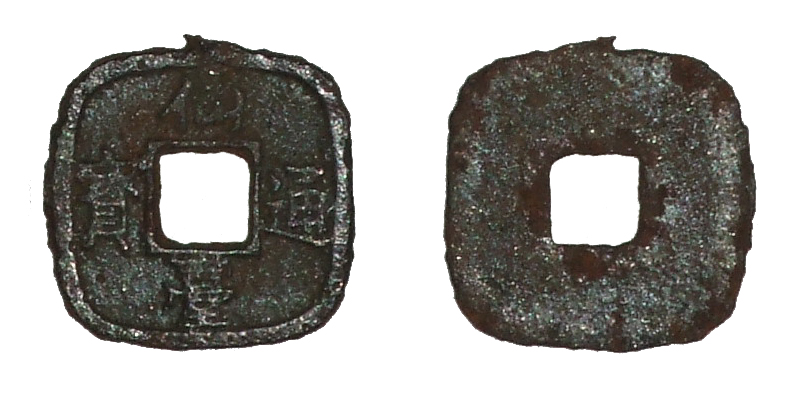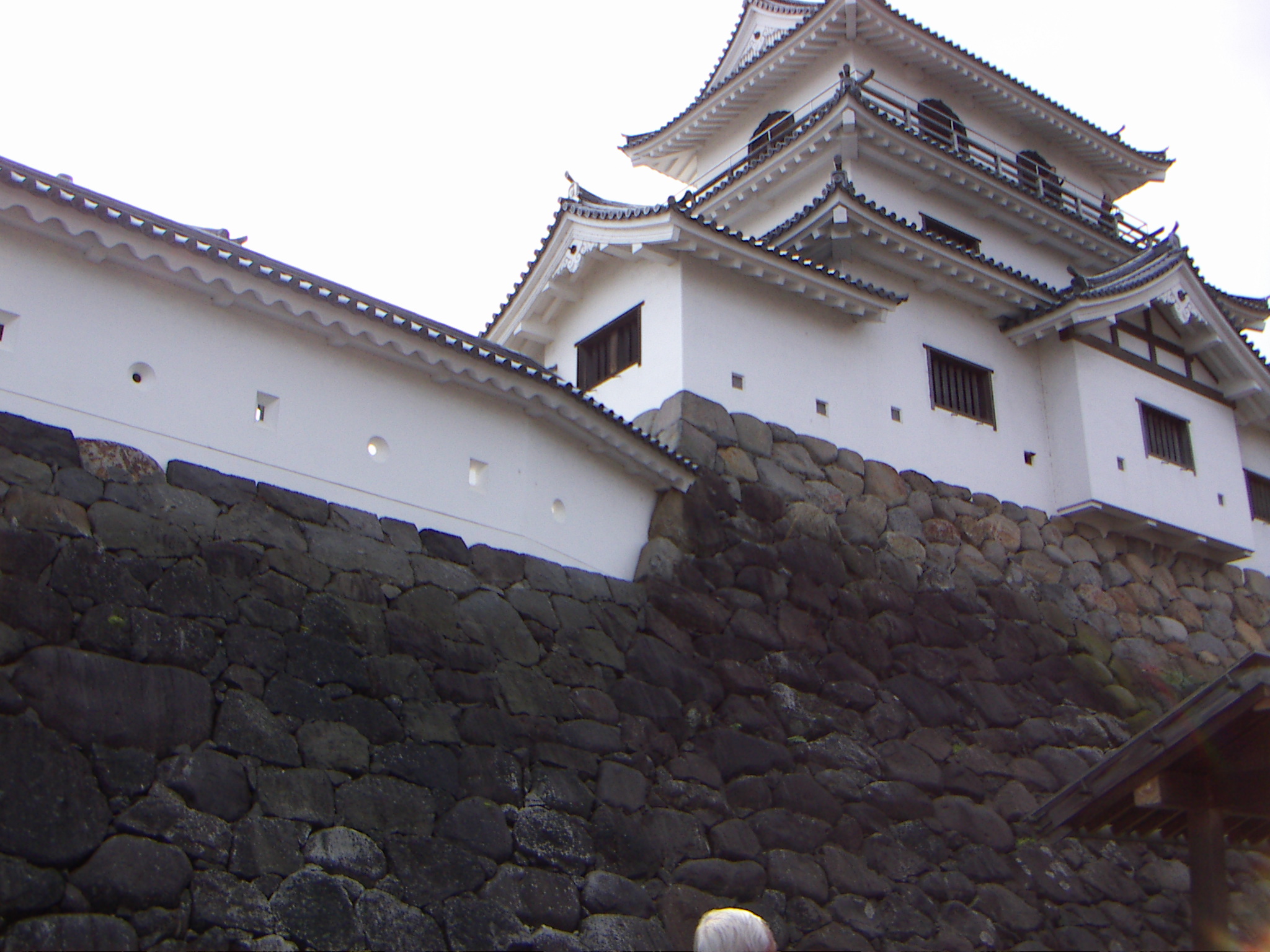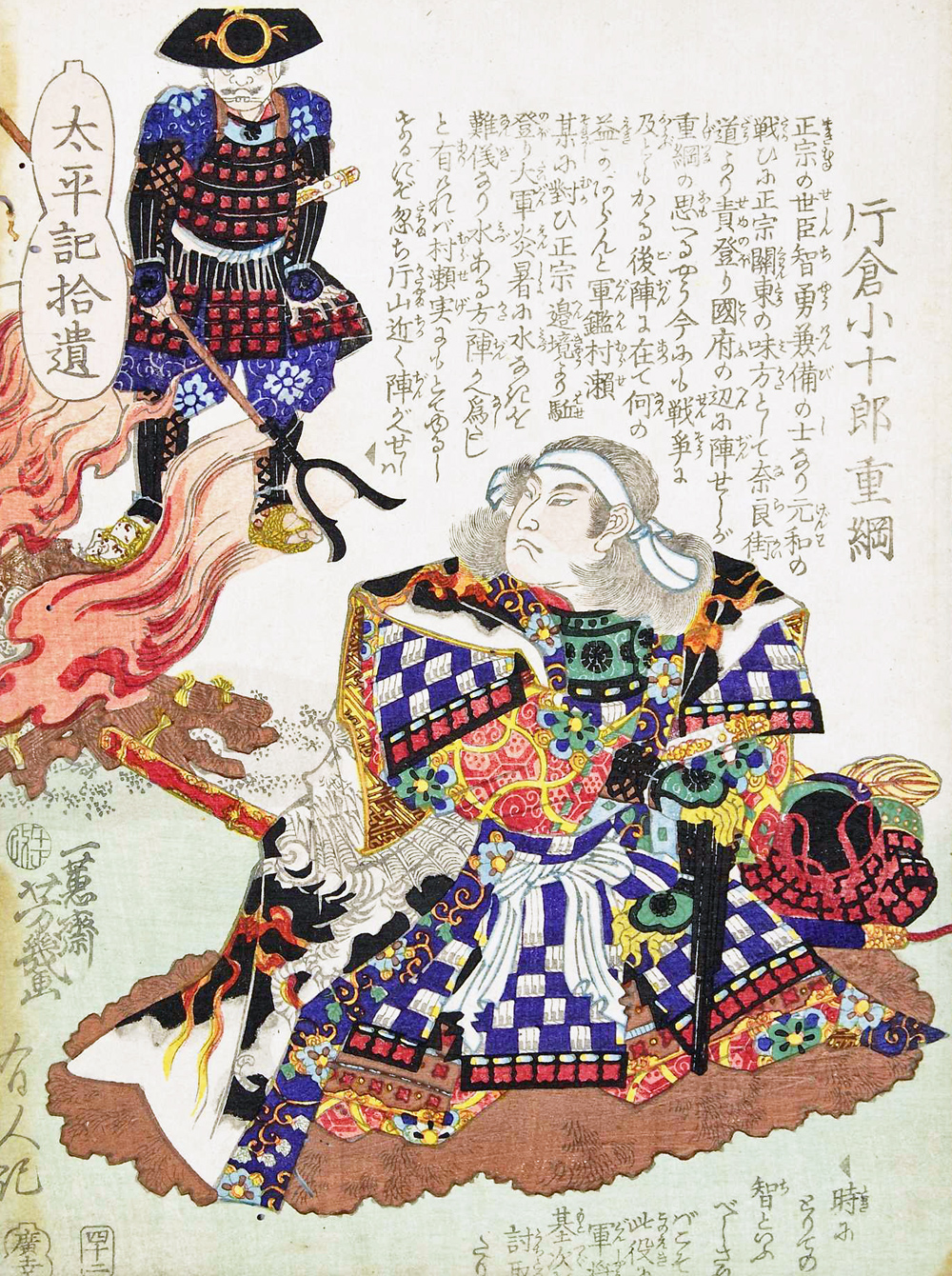|
Katakura Kagenaga (2nd)
was a Japanese samurai of the early Edo period, who served as a senior retainer of the Date clan of Sendai han. His childhood name was Sannosueke (三之助) later changed to Kojūrō. He bore the same name as his great-grandfather. The lord of Shiroishi Castle, Kagenaga was the third bearer of the common name Kojūrō. During the Date incident (Date-sōdō; 伊達騒動), he was a caretaker for the young daimyō, Kamechiyo (later ). Upon receiving news of the actions of |
Edo Period
The or is the period between 1603 and 1867 in the history of Japan, when Japan was under the rule of the Tokugawa shogunate and the country's 300 regional '' daimyo''. Emerging from the chaos of the Sengoku period, the Edo period was characterized by economic growth, strict social order, isolationist foreign policies, a stable population, perpetual peace, and popular enjoyment of arts and culture. The period derives its name from Edo (now Tokyo), where on March 24, 1603, the shogunate was officially established by Tokugawa Ieyasu. The period came to an end with the Meiji Restoration and the Boshin War, which restored imperial rule to Japan. Consolidation of the shogunate The Edo period or Tokugawa period is the period between 1603 and 1867 in the history of Japan, when Japan was under the rule of the Tokugawa shogunate and the country's regional '' daimyo''. A revolution took place from the time of the Kamakura shogunate, which existed with the Tennō's court, to the Tok ... [...More Info...] [...Related Items...] OR: [Wikipedia] [Google] [Baidu] |
Date Clan
The is a Japanese samurai kin group. Papinot, Jacques Edmond Joseph. (1906). ''Dictionnaire d’histoire et de géographie du Japon''; Papinot, (2003)"Date", ''Nobiliare du Japon'', p. 5 retrieved 2013-5-5. History The Date family was founded in the early Kamakura period (1185–1333) by Isa Tomomune who originally came from the Isa district of Hitachi Province (now Ibaraki Prefecture), and was a descendant of Fujiwara no Uona (721–783) in the sixteenth generation. The family took its name from the Date district (now Date City in Fukushima Prefecture) of Mutsu Province which had been awarded in 1189 to Isa Tomomune by Minamoto no Yoritomo, the first Kamakura shōgun, for his assistance in the Genpei War and in Minamoto no Yoritomo's struggle for power with his brother, Minamoto no Yoshitsune. During the Nanboku-chō Wars in the 1330s, the Date supported the Imperial Southern Court of Emperor Go-Daigo through Kitabatake Akiie, who had been appointed Commander in Chief ( ... [...More Info...] [...Related Items...] OR: [Wikipedia] [Google] [Baidu] |
Sendai Han
The , also known as the , was a domain of the Tokugawa Shogunate of Japan during the Edo period from 1600 to 1871. The Sendai Domain was based at Aoba Castle in Mutsu Province, in the modern city of Sendai, located in the Tōhoku region of the island of Honshu. The Sendai Domain was ruled for its existence by the '' tozama'' ''daimyō'' of the Date, and under the ''kokudaka'' system its income rating at 625,000 ''koku'' was the third-largest domain in Japan after the Satsuma Domain and Kaga Domain. The Sendai Domain was geographically the largest domain in northern Japan with its mostly-contiguous holdings covering most of southern Mutsu Province, including all of present-day Miyagi Prefecture, parts of southern Iwate Prefecture and northeastern Fukushima Prefecture. The Sendai Domain was the focal member of the Ōuetsu Reppan Dōmei against the Meiji Restoration during the Boshin War. The Sendai Domain was dissolved in the abolition of the han system in 1871 by the Meiji governme ... [...More Info...] [...Related Items...] OR: [Wikipedia] [Google] [Baidu] |
Shiroishi Castle
is a flatland-style Japanese castle in what is now the city of Shiroishi, Miyagi. During the Edo period, it was the castle of the Katakura clan, who were hereditary retainers of the Date clan of Sendai Domain. During the Boshin War, it was also temporarily the headquarters of the Ōuetsu Reppan Dōmei. The castle was also known by the name of Early history Shiroishi Castle was founded in the Kamakura period, by the Karita clan. Sengoku Era In 1591, during the late Azuchi–Momoyama period, the castle was completely rebuilt by the Gamō clan with stone walls and a donjon, and ruled by the senior retainer Gamō Satonari. Edo Era Beginning in 1600, the castle and its environs were recovered by the Date clan as part of Sendai Domain under the Tokugawa shogunate. From 1600 onward, Shiroishi Castle was ruled by the Katakura clan, who were retainers of the Date. It was also one of the few exceptions to the Tokugawa shogunate's rule of one castle per domain. The castle burned down in ... [...More Info...] [...Related Items...] OR: [Wikipedia] [Google] [Baidu] |
Katakura Kojūrō
was the common name of the head of the Japanese Katakura clan, who served as senior retainers to the Date clan. Following the Date clan's move into Sendai han, they were granted holdings at Shiroishi Castle (12,000 ''koku'' in total), which they held through the start of the Meiji Era. A chronologically arranged list of the generations of Edo-era Katakura Kojūrō (listed by their formal name) follows: Edo-era Katakura family heads # Kagetsuna (1557–1615) # Shigenaga (1585–1659) # Kagenaga (1630–1681) # Muranaga (1667–1691) # Murayasu (1683-?) # Muranobu # Murasada (1676–1744) # Murakiyo # Muratsune (1757–1822) # Kagesada # Munekage # Kuninori (1818–1886) # Kagenori (1838–1902) # Kagemitsu Katakura family heads since 1868 # Kenkichi # Nobumitsu # Shigenobu Kagetsuna, the first Katakura Kojūrō, was arguably the most famous, having served alongside Date Masamune. The clan came to prominence yet again in the Boshin War, when Shiroishi Castle was u ... [...More Info...] [...Related Items...] OR: [Wikipedia] [Google] [Baidu] |
Date Sōdō
The Date Sōdō (伊達騒動), or Date Disturbance, was a noble family dispute within the Date samurai clan, which occurred in 1671. History In 1660, the ''daimyō'' (feudal lord) of the Sendai Domain, and clan head, Date Tsunamune was arrested in Edo, for drunkenness and debauchery. The charges are generally believed to have been true, but the arrest was probably encouraged heavily by certain vassals and kinsmen in the north. These vassals and kinsmen appealed to the Council of Elders in Edo that Tsunamune was not fit to rule, and that his son Date Tsunamura, great-grandson of Masamune, should become the ''daimyō''. Thus, Tsunamura became ''daimyō'', under the guardianship of his uncles, Date Munekatsu and Muneyoshi. Ten years of violence and conflict followed in the domain, reaching a climax in 1671 when Aki Muneshige, a powerful relative of the Date, complained to the shogunate of the mismanagement of the fief under Tsunamura and his uncles. The Metsuke (Inspector) for the ... [...More Info...] [...Related Items...] OR: [Wikipedia] [Google] [Baidu] |
Date Tsunamura
was an early Edo period Japanese samurai, and the 4th ''daimyō'' of Sendai Domain in northern Japan, and the 20h hereditary chieftain of the Date clan. Tsunamura’s succession led to the ''Date Sōdō'' or "Date Disturbance" of 1671, which has been retold in theatre, and has become one of the more well-known tales of unrest and disunity among the ''daimyō'' of the Edo period. Biography Tsunamura was the eldest son of Date Tsunamune by a concubine. His childhood name was Kamechiyo-maru (亀千代丸). He was later styled , but his name was changed to Date Tsunamura during his ''genpuku'' ceremony, which was held by ''shōgun'' Tokugawa Ietsuna. In later life, his courtesy title was ''Sakonoe-gon-shōshō'' (General of the Left Guards) and ''Mutsu-no-kami'' and his Court rank was Senior Fourth Rank, Lower Grade. Tsunamura became ''daimyō'' at the age of 2, when his father was relieved of his position due to political manipulations by his uncles, Date Munekatsu, ''daimyō'' of ... [...More Info...] [...Related Items...] OR: [Wikipedia] [Google] [Baidu] |
Harada Munesuke
Harada (written: ) is the 52nd most common Japanese surname. Notable personalities with this surname include: *, Japanese actor *, Japanese professional wrestler *, Japanese Zen Buddhist monk *, Japanese swimmer *, Japanese rock climber *, Japanese anime producer *, Japanese World War II flying ace *, Japanese game producer *, Japanese equestrian *, Japanese mathematician *, Japanese novelist *, Japanese boxing champion *, Japanese ski jumper *, Japanese footballer *, Japanese footballer *, Japanese comedian and actor *Takashi Harada, associated with the Harada Method of management development *, Japanese tennis player *, Japanese pastor, former president of Doshisha University *, Japanese motorcyclist *Yasuko Harada (原田康子, 1928-2009), Japanese novelist See also *Toyo Harada, fictional comic book superhero appearing in books published by the American publisher Valiant Comics Valiant Comics is an American comic book publisher. The company was founded in 1989 by former ... [...More Info...] [...Related Items...] OR: [Wikipedia] [Google] [Baidu] |
Attainder
In English criminal law, attainder or attinctura was the metaphorical "stain" or "corruption of blood" which arose from being condemned for a serious capital crime (felony or treason). It entailed losing not only one's life, property and hereditary titles, but typically also the right to pass them on to one's heirs. Both men and women condemned of capital crimes could be attainted. Attainder by confession resulted from a guilty plea at the bar before judges or before the coroner in sanctuary. Attainder by verdict resulted from conviction by jury. Attainder by process resulted from a legislative act outlawing a fugitive. The last form is obsolete in England (and prohibited in the United States), and the other forms have been abolished. Middle Ages and Renaissance Medieval and Renaissance English monarchs used acts of attainder to deprive nobles of their lands and often their lives. Once attainted, the descendants of the noble could no longer inherit his lands or income. Attainde ... [...More Info...] [...Related Items...] OR: [Wikipedia] [Google] [Baidu] |
Katakura Shigenaga
was a Japanese samurai of the Azuchi-Momoyama period through early Edo period. The son of Katakura Kagetsuna, Shigenaga was the second man to bear the common name Kojūrō. His name was originally Shigetsuna; however, to avoid conflict with the fourth shōgun Ietsuna's name, he changed it to Shigenaga. In 1614, he took part in the Osaka Campaign, fighting Gotō Matabei at Dōmyōji Temple. Following the Osaka Campaign, Shigenaga married a daughter of Sanada Yukimura and his wife, Chikurin-in (Ōtani Yoshitsugu's daughter and adopted daughter of Toyotomi Hideyoshi), and adopted their second son, Sanada Daihachi, later known as "Katakura Heinosuke Morinobu". He also assisted many of the masterless former Sanada retainers. He was succeeded by his maternal grandson also adopted son, Kagenaga. Family * Father: Katakura Kagetsuna * Mother: Yanouchi Shigesada's daughter * Wives: ** Haryu Aya ** Sanada Ume (1604-1681) * Daughter: Kisa married Matsumae Yasuhiro * Adopted Sons: * ... [...More Info...] [...Related Items...] OR: [Wikipedia] [Google] [Baidu] |
Katakura Muranaga
(1667 – 1691) was a Japanese samurai of the Edo period. A senior retainer of the Sendai domain, he was first known as Masanaga (政長). Muranaga was also the fourth Katakura Kojūrō. His childhood name was Sannosueke (三之助) later changed to Kojūrō. Family * Father: Katakura Kagenaga (2nd) * Mother: Jishō-in * Wife: Matsumae Ichiko * Son: Katakura Murayasu (1683-1720) was a Japanese samurai of the Edo period. A senior retainer of the Sendai domain, he was first known as Kageakira (景明). Murayasu was also the fifth Katakura Kojūrō. His childhood name was Sannosueke (三之助) later changed to K ... by Ichiko External linksKatakura family tree(in Japanese)(in Japanese) 1667 births 1691 deaths Samurai Katakura clan {{samurai-stub ... [...More Info...] [...Related Items...] OR: [Wikipedia] [Google] [Baidu] |
Katakura Murasada
(1676–1744) was a Japanese samurai of the Edo period. A senior retainer of the Sendai domain, he was first known as Muratoshi (村利). Retired in 1743 in favor of his adopted son Murakiyo. Murasada was the seventh Katakura Kojūrō. His childhood name was Matakuro (又九郎). Family * Father: Katakura Kagenaga (2nd) * Mother: Jōshōin * Adopted Son: Katakura Murakiyo ( fl. 1743) was a Japanese samurai of the Edo period. A senior retainer of the Sendai domain, he was first known as Kagehiro (景寛). Murakiyo was the eighth Katakura Kojūrō. His childhood name was Shigekuro (繁九郎) later Yuunosuke (勇之 ... External linksKatakura family tree(in Japanese)(in Japanese) Samurai 1676 births 1744 deaths Karō Katakura clan {{samurai-stub ... [...More Info...] [...Related Items...] OR: [Wikipedia] [Google] [Baidu] |




